Steph W. from SEOPressor


...help you check your website and tell you exactly how to rank higher?


82
score %
SEO Score

Found us from search engine?
We rank high, you can too.
SEOPressor helps you to optimize your on-page SEO for higher & improved search ranking.
By allysa on November 1, 2016
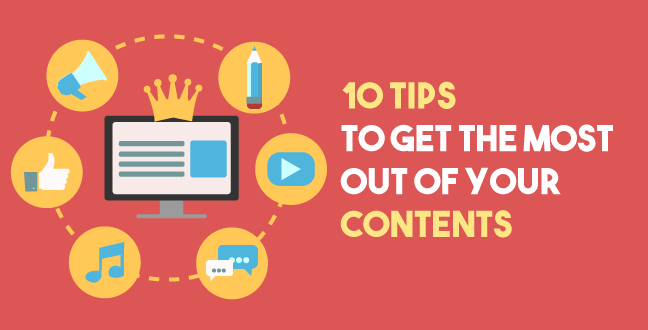
Content marketing isn’t expensive, but it isn’t free, either – with costs like writer’s pay, overhead, time costs, and opportunity costs, it’s important to get the most out of every piece of content.
See, many companies churn out content on a daily basis but don’t see any increase in their traffic or sales. Because of that, they think content marketing doesn’t work.
In reality, though, the problem is that they aren’t fully utilizing the content they’ve created. It’s sort of like having a car without any gasoline – you have the vehicle to deliver your content, but without fuel, you’re not going to reach anyone.
With that in mind, here are some content marketing tips you can use to maximize the value of your content and ensure a positive return on your investment.

By doing SEO, you’ll enable your contents to rank higher on search engine, drawing organic traffic to your website.
Search Engine Optimization is one of the core parts of content marketing, and with good reason – that’s where you’re going to get the majority of your website’s visitors. Ranking well in searches is often the best way to ensure that each piece of content you write brings a positive return.
Fortunately, this isn’t as difficult as many companies think. The majority of your content should be aimed towards middle and long-tail keywords, which have less competition.
Many publishing platforms can take a look at each of your pages and tell you what’s optimized for search engines and what isn’t, but as a quick list, consider the following:

Creating a great content is only the first step. You need to promote it to get people to read it.
Once you’ve actually written your content, it’s time to start getting it in front of as many eyeballs as possible. Articles should be shared across your social media platforms – including both company and personal accounts – in order to give it the initial traffic boost it needs. Remember, traffic is a factor in search engine rankings, and a strong start can help an article get a good placing.
You can also share articles in response to specific topics or after some time has passed since the initial sharing. Remember, for this part of our content marketing tips, it’s best to share content when it’s actually relevant to what people are talking about. The more helpful your article is, the more people are going to click it and, ultimately, transform into customers.

By spending a little, you can get your content across a large number of people instantly.
Wait, I’m telling you to spend more money? Well… yes. You don’t have to spend a lot of money advertising each of your articles, but just like sharing your content on social media when you put it out, a few ad dollars can give a major boost to your initial traffic.
If your content is good, you’ll probably get at least a few customers – and even if people don’t convert from these ads, you’ll probably end up with a higher rank in search engines thanks to the initial views.
Finally, if an article does unusually well with paid advertising… well, now you know, and you can start doing more of that. Spending more money on ads isn’t really a problem when those ads are giving you a positive return on your investment.
This is one of the obvious content marketing tips many companies forget to do, but it’s a powerful way to build on your existing content. Essentially, interlinking material allows you to use your blog posts as references for each other.
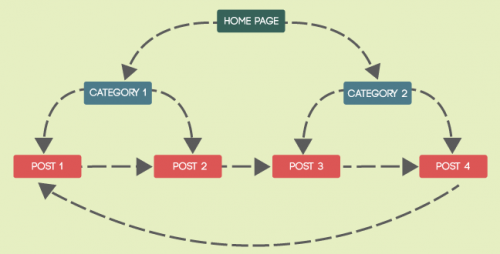
By interlinking your contents you’ll keep visitors reading longer as they jump from pages to pages.
For example, let’s say that you run a business in real estate, and you wrote a really good post about using photography to help sell houses. Today, you’re writing about what a house should look like before any pictures are taken, and you can refer back to your previous post while keeping your current one on-topic.
Visitors have different interests, and smart use of interlinking can help bring them to the content that’s most likely to convert them into a paying customer. Don’t overlook the kind of value this part of our content marketing tips can bring – interlinking can and does make a difference.
As an added bonus, interlinking tends to make your content easier to write – many writers have previous articles in mind when they’re producing content, so linking to older material comes naturally.
Similar to Interlinking, you can suggest related content at the end of each blog by linking to other, similar posts. Do not automate this process – do it yourself to make sure the content is actually related and something that a visitor might actually be interested in clicking.
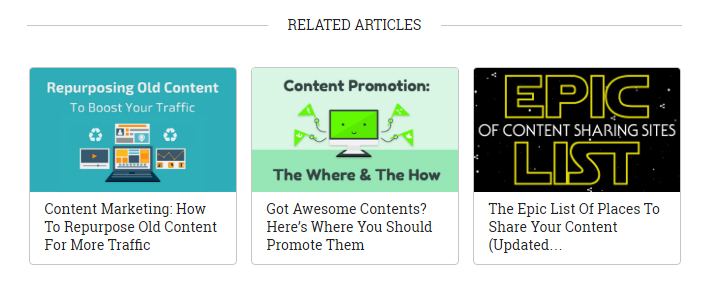
By suggesting further readings into the topic, you’ll help readers learn even more while keeping each posts focused.
The ideal form of related content is an article that’s on the same subject, but focuses on a different aspect. Contents complimenting each others will be best – one telling the users why, the other teaching them how.
Let’s go back to our real estate photography example – related content here might take the form of an explanation of different cameras and how they can provide better pictures. That’s probably the point where you’d want to encourage people to contact you, especially if you start mentioning how you have the cameras you need to take the best pictures
Of course, every industry is different – and to make the most of these content marketing tips, you’ll have to be creative and adjust them to your company’s specific needs. The basic principle is the same across every industry, though – genuinely relevant content is something visitors are interested in, so it’s worth providing a few suggestions.
This is one of my favorite tricks. Generally, when you pay for a blog post, you get the written content you need for one blog post… but that’s not the only way you can use that content.
For this part of our content marketing tips, we’re going to focus on reusing and repurposing that content.
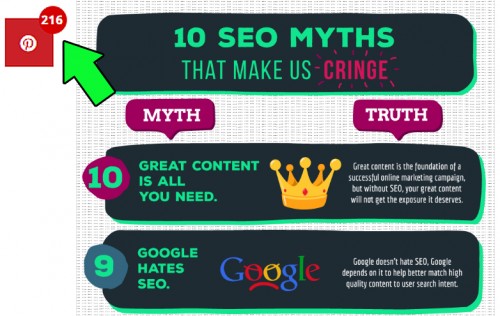
By converting one of our posts into an infographic, we are able to share it on Pinterest and get additional shares.
Generally, the same content can be converted into a number of different forms, including:
Repurposing content this way saves you from having to create truly unique content for each medium – and you’ll be able to share your content in many more locations.
In all seriousness, this part of our content marketing tips may be able to do more for your business than anything else on this page. It takes effort, that’s true… but once you’ve done it a few times, it will start to come easier, and you can end up creating a lot of content at a very reasonable price.
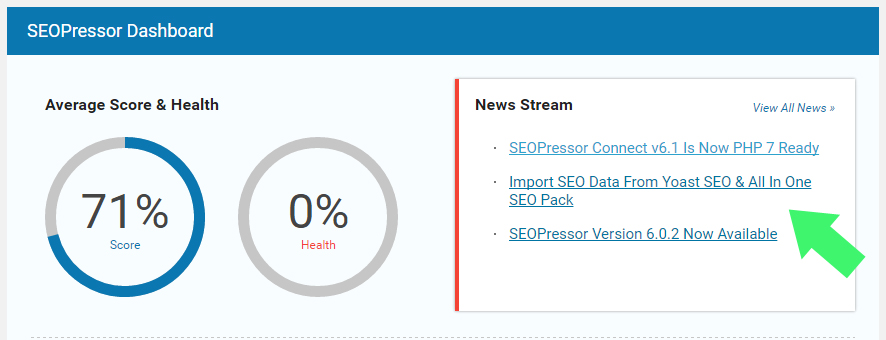
In SEOPressor Connect for example, we add links pointing to our contents explaining new features and how to use them.
This is particularly useful if you’re selling digital products like software. Your content can be added to help users understand how to better use the software in question – as tips, tutorials, or simply explaining the benefits of each function you’re programmed.
As with making infographics and slideshows, you’ll probably want to trim your content down to the most relevant points when you do this – but in the end, chances are users will appreciate the extra information.
We already talked about how important search engine optimization is, but as far as our content marketing tips go, images deserve special consideration. By creating high-quality, original images and then optimizing them to be found, you can start ranking high on alternative searches like Google Image Search.
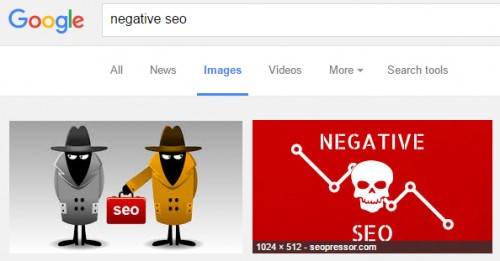
An often forgotten part of SEO, optimizing and ranking your images in Google image search allows you to get traffic from people reusing your picture and linking it back to you.
Furthermore, by allowing people to reuse your image – but having them link back to you as the original source – you can ultimately get more backlinks and traffic for your website. Naturally, this is most useful if there’s some aspect of your business that can be made photogenic – chances are you’ll need to be creative when actually taking your pictures.
Email is an excellent way of communicating with people who have already expressed interest in your company – and regularly providing links to your blog can help you stay in their minds. There are a couple of things to keep in mind for this part of our content marketing tips.
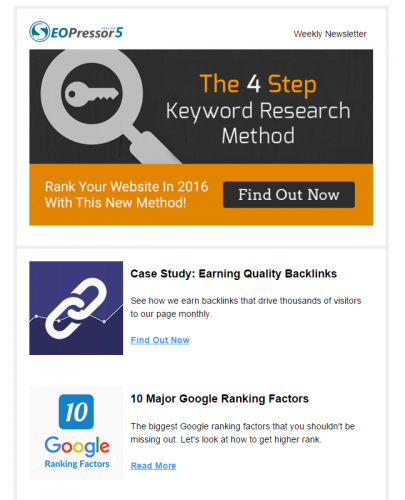
Compiling your contents and sending them weekly in an email digest lets your readers know when new updates are up.
First, your email digest should focus on the most popular articles from a given period of time. Your goal should always be to deliver high-quality content through your emails, and limiting your links to popular articles can help keep readers interested in what you have to say.
Second, you can use your email digest to address topics that are currently popular with your audience. This helps ensure that your content is seen as timely and relevant by the people who are most likely to buy from you again.
Be sure your newsletter follows a consistent format – this helps teach the readers where to look for the content they’re most interested in. You’ll also want to consider when to send the email in order to ensure the highest rate of opening.
Finally, as the last of our content marketing tips, you should look for ways to answer questions. There’s almost always someone discussing a particular topic, and the more popular it is, the more likely there are to be conversations.
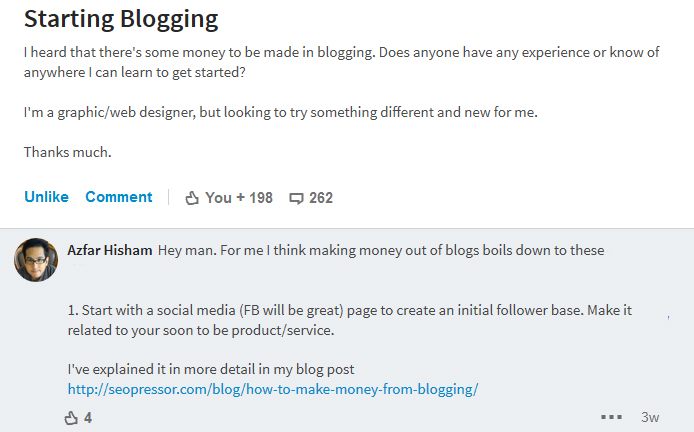
People ask questions everywhere online and often, the answers are too big to fit in a comment section.
Your goal here is to look for conversations where links to your content would be genuinely useful. By actively helping the other people involved with the conversation, you can form a positive first impression and be seen as a contributor instead of an advertiser.
That would be useful enough on its own, but your links – and the conversation – will remain online for others to see. When these people (who tend to be interested in the same subject) see your link as part of the conversation, there’s a very realistic chance they’ll be interested in following it.
The main advantage of content marketing over traditional marketing is the continuous stream of traffic generated by each piece of content long after it’s originally published. Maximizing the traffic that comes from each piece of content will help you achieve your business goals faster, since even a small amount of improvement for each piece of content can add up to a major increase in profit over time.
Updated: 28 December 2025


Save thousands of dollars (it’s 100x cheaper)

Zero risk of Google penalty (it’s Google-approved)

Boost your rankings (proven by case studies)
Rank High With This Link Strategy
Precise, Simplified, Fast Internal Linking.
